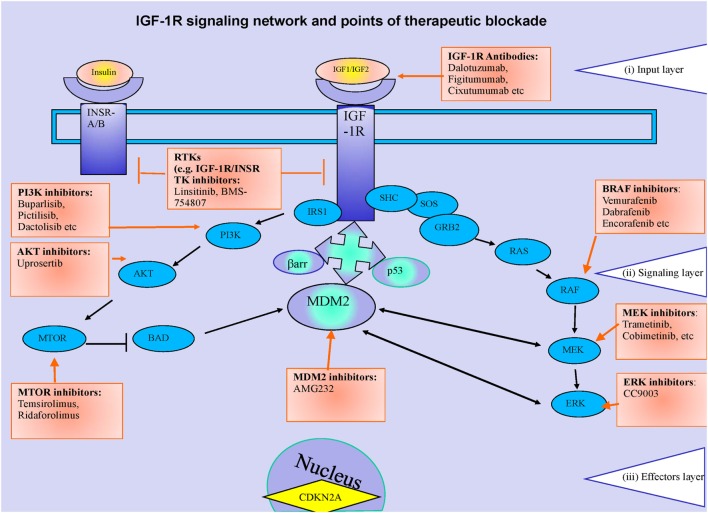Figure 1.
Receptor tyrosine kinases (RTKs) (IGF-1R) signaling network and points of therapeutic blockade. The canonical RTKs signaling can be represented as a system of three layers. The input layer (i) is made up of ligands (e.g., insulin, insulin-like growth factor 1, IGF-2) and surface receptors (IGF-1R, insulin receptor). Ligand–receptor interaction initiates activation of the second layer (ii) (the signaling cascade) through recruitment of the two main adaptor proteins; Shc and the IRS’s. Through stepwise enzymatic activation, the signal cascade is set up, following two main routes—the mitogen-activated protein kinase (MAPK) route and the phosphoinositide 3-kinase (PI3K) route. The signaling cascade arms culminate in the activation of transcription factors in layer (iii), which control site specific transcription and generate the resulting biological effects. The molecular changes associated to melanoma pathogeny and hence potential therapeutic targets are indicated within each of the system’s layers.

